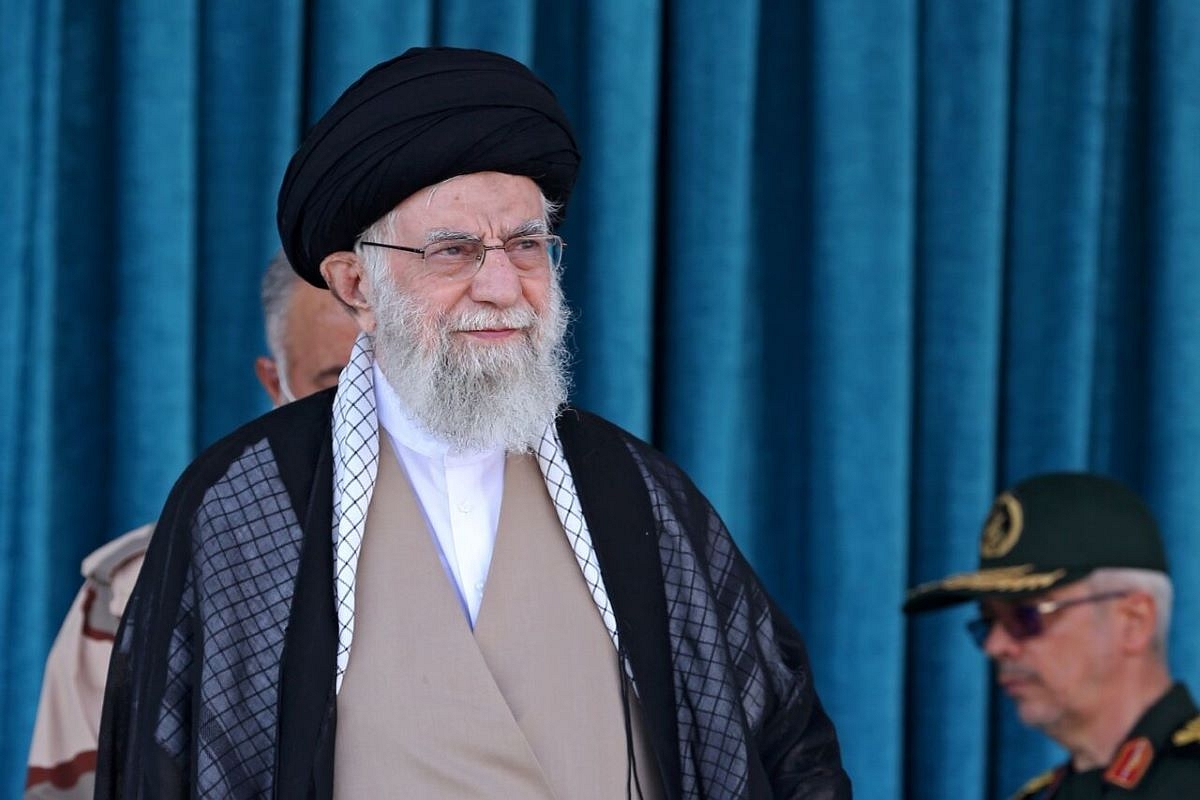World
Ayatollah Khamenei Blames U.S And 'Zionist' Forces As Anti-Hijab Protests Rage Across Iran, Condemns Burning Of Koran And Mosques By Protestors

Ayatollah Khamenei
Iran’s supreme leader, Ayatollah Ali Khamenei, has blamed the United States and Israel for orchestrating protests that have erupted across the country for more than two weeks over the custodial death of a 22-year-old Kurdish woman, accusing the countries of trying to stop Iran’s “progress”.
Speaking at the graduation ceremony of cadets at a police university in Tehran, the Supreme Leader said that while the "chaos was planned by the United State and the Zionist regime, their mercenaries and some betraying Iranians abroad helped them."
Khamenei also insinuated that "media affiliated to the American capitalism and their mercenaries, like some governments in the region and Saudi Arabia" have a role in protests
"We were heartbroken, too. But the reaction to this incident, while no investigation has been done and nothing has been certain, should not have been this that some people come and make the streets insecure, cause the people to feel unsafe, harm the security, burn the Quran, remove the hijab of a woman, burn mosques and hussainiyahs, and arson banks and people’s cars," he added.
Khamenei claimed that the unrest was an attempt to stop the country from the advances he said it had made despite US sanctions imposed since 2018.
"The American’s sympathy for the death of a girl is fake and they are happy in fact for gaining a pretext to make chaos" Khamenei alleged.
The death of Mahsa Amini, a young Kurdish woman who hails from from the western city of Saqez, has sparked a chain of anti-government protests in many cities all over Iran.
Amini was visiting Tehran with her family when she was stopped on Sept. 13 by the Guidance Patrol (“Gasht-e-Ashab”), a morality police unit that enforces Iran’s obligatory Islamic dress codes, on charges of being “immodestly dressed”. According to the law, women should cover all their hair with a headscarf and wear clothes that cover most of their skin.
Hijabs became compulsory in public for Iranian women and girls over the age of 9 after the 1979 Islamic Revolution, when monarchy was replaced with an authoritarian Islamist theocracy. The morality police in its current form was created 15 years ago.
Support Swarajya's 50 Ground Reports Project & Sponsor A Story
Every general election Swarajya does a 50 ground reports project.
Aimed only at serious readers and those who appreciate the nuances of political undercurrents, the project provides a sense of India's electoral landscape. As you know, these reports are produced after considerable investment of travel, time and effort on the ground.
This time too we've kicked off the project in style and have covered over 30 constituencies already. If you're someone who appreciates such work and have enjoyed our coverage please consider sponsoring a ground report for just Rs 2999 to Rs 19,999 - it goes a long way in helping us produce more quality reportage.
You can also back this project by becoming a subscriber for as little as Rs 999 - so do click on this links and choose a plan that suits you and back us.
Click below to contribute.
Latest